
Grilling a juicy and flavorful ribeye steak is an art that every home chef can master. This guide will walk you through how to cook a ribeye steak on a gas grill to perfection every time. You’ll learn the essential techniques that professional chefs use to create mouthwatering steaks. Whether you’re a seasoned griller or just starting out, these expert tips will help you impress your family and friends with every delicious bite.
Key Takeaways
- Choosing the right cut of ribeye steak is crucial for achieving the perfect texture and flavor.
- Proper seasoning and marinating techniques can enhance the natural flavors of the ribeye.
- Controlling the grill temperature is key to ensuring your steak is cooked to your desired doneness.
- Resting the steak after grilling allows the juices to redistribute, resulting in a juicier and more tender bite.
- Understanding the different grill zones and how to use them can help you achieve the perfect sear and doneness.
Selecting the Perfect Ribeye Steak
Choosing the right ribeye steak is essential for creating a truly unforgettable meal. Focus on selecting a high-quality cut with plenty of visible marbling, as this intramuscular fat adds richness, tenderness, and flavor. Look for steaks labeled Prime or Choice grade, and ensure the meat has a vibrant color and firm texture — signs of top-notch ribeye quality.
Choosing the Right Cut
The ribeye steak is prized for its tenderness and rich, beefy flavor. When selecting one, look for a cut with plenty of visible marbling — the thin streaks of fat woven through the meat. This intramuscular fat melts during grilling, keeping the steak juicy, tender, and full of flavor with every bite.
Also, think about the steak’s thickness. A 1 to 1.5 inch thick steak is best for grilling. It gets a great sear and stays juicy inside.
Checking for Marbling and Quality
When selecting a ribeye steak, look for a bright red color and evenly distributed marbling throughout the meat. These are signs of freshness and quality. Avoid steaks with excessive fat caps or visible gristle, as they can lead to uneven cooking and negatively impact the steak’s flavor and texture.
Where your ribeye steak comes from matters too. Choose high-quality steaks from trusted butchers or specialty stores. This way, you get a top-notch ribeye steak.
| Characteristic | Optimal for Grilled Ribeye Steak |
|---|---|
| Cut | Well-marbled, 1-1.5 inches thick |
| Color | Vibrant red |
| Fat Content | Moderate, evenly distributed |
| Source | High-quality, reputable butcher |
By picking a ribeye steak with the right cut, marbling, and quality, you’re set for an amazing grilled steak.
Preparing the Ribeye Steak for Grilling
Before you start grilling your ribeye steak, proper preparation is essential. Begin by patting the steak dry with paper towels to remove any surface moisture. This simple but crucial step helps create a beautiful sear and locks in the natural juices and flavor of the ribeye steak, ensuring a delicious, restaurant-quality result.
Seasoning and Marinating Techniques
Next, add flavor to your ribeye steak with seasonings and marinades. Use your favorite spices and herbs like salt, pepper, garlic powder, or a special ribeye steak seasoning mix. For more flavor, marinate the ribeye steak in oil, acid, and fresh herbs. This makes the meat tender and full of taste, making your ribeye steak unforgettable.
| Seasoning Ideas | Marinade Ingredients |
|---|---|
| Salt Pepper Garlic powder Onion powder Paprika Dried herbs (thyme, rosemary, oregano) | Olive oil Balsamic vinegar Soy sauce Lemon or lime juice Minced garlic Fresh herbs (parsley, basil, rosemary) |
Preparing your ribeye steak with the right seasonings and marinades is key to a great grilling experience. You’ll impress your guests with a juicy, flavorful ribeye steak that’s the highlight of the meal.
How to Cook a Ribeye Steak on the Gas Grill
With your perfectly selected and prepped ribeye steak, it’s time to fire up the gas grill and start cooking. The secret to grilling an exceptional ribeye steak on a gas grill lies in mastering proper grilling techniques and maintaining precise temperature control. This ensures a beautifully seared exterior and a juicy, flavorful interior every time.
First, preheat your gas grill to a high temperature, ideally between 450°F and 550°F. This intense heat is crucial for achieving a rich, caramelized crust on your ribeye steak while sealing in the juices. Proper preheating ensures the exterior gets that perfect sear, while the inside stays juicy, tender, and packed with flavor.
Once the grill is hot, place the ribeye steak right over the heat. Let it sear for 3-4 minutes on each side, until you get that signature char. Adjust the heat to avoid burning or overcooking.
To cook evenly, turn the ribeye steak a quarter turn halfway through each side. This trick ensures a beautiful, evenly cooked steak every time.
While grilling the ribeye steak, keep a close eye on the internal temperature using a reliable meat thermometer. For a perfectly medium-rare ribeye, aim for an internal temperature between 130°F and 135°F. Monitoring the temperature ensures you achieve the ideal doneness without overcooking, preserving the steak’s juiciness and flavor.
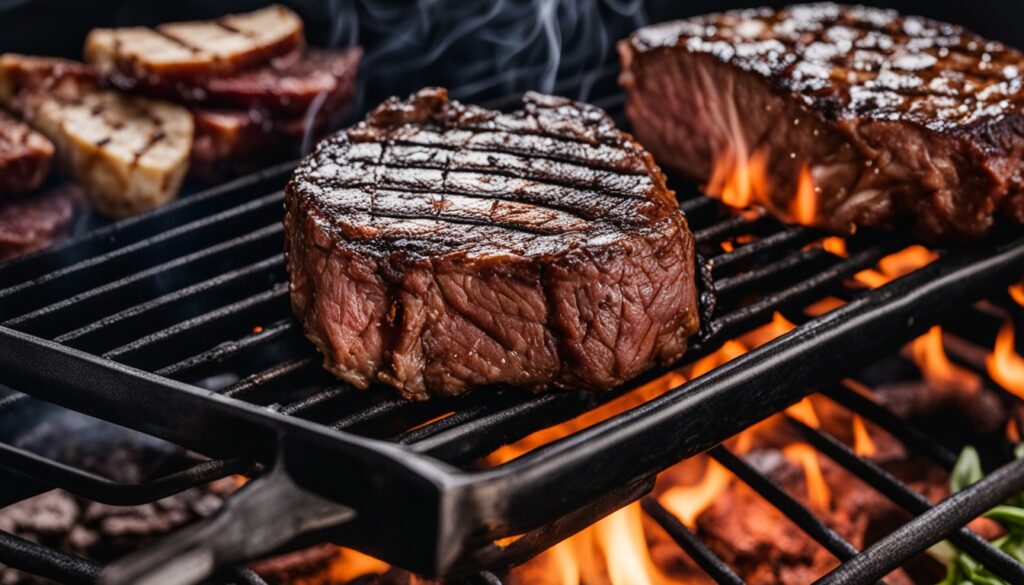
Remember, the real secret to how to cook a ribeye steak on the gas grill is patience and trusting your instincts. With a bit of practice, you’ll be able to grill ribeye steaks like a pro, achieving that perfect sear and juicy center every time. Before long, you’ll be impressing your friends and family with your delicious, steakhouse-quality results right from your backyard.
Mastering Grill Temperature Control
To achieve the perfect ribeye steak on your gas grill, mastering temperature control is essential. Understanding how to use your grill’s temperature zones — both direct and indirect heat — allows you to sear the outside while gently cooking the inside. This technique ensures your ribeye steak turns out juicy, tender, and perfectly cooked every time.
Understanding Grill Zones
Gas grills have different temperature zones. The hottest spots are right over the burners. Use these zones to sear your steak first, then move it to a cooler area to finish cooking. Adjust the heat as you go to get the steak just how you like it.
Here are some tips to use your grill’s temperature zones well:
- Find the hottest and coolest spots on your grill. The areas right over the burners are the hottest, and the spaces between them are cooler.
- Start by searing the steak over the highest heat to get a nice, caramelized crust. This usually takes 2-3 minutes per side.
- After searing, move the steak to a cooler zone to finish cooking. Adjust the heat as needed to get it to your liking.
- Use a meat thermometer to check the steak’s internal temperature. This makes sure it reaches your preferred doneness.
By getting good at gas grill temperature control and knowing the grill zones, you can make your ribeye steak grilling amazing. You’ll get a perfectly cooked and tasty steak every time.

Tips for Achieving the Perfect Steak Doneness
Cooking the perfect ribeye steak is a culinary art that requires both precision and focus. One of the most important factors is monitoring the internal temperature of the meat. Using a reliable meat thermometer ensures your steak reaches your desired level of doneness — whether it’s rare, medium-rare, or well-done — while preserving its juiciness and flavor.
For a medium-rare ribeye, aim for an internal temperature of 125°F to 130°F. For medium, it should be 135°F to 140°F. And for medium-well, 145°F to 150°F is the goal.
It’s crucial to let the steak rest for 5-10 minutes before cutting it. This lets the juices spread out, making the steak juicier and tastier.
| Doneness | Internal Temperature |
|---|---|
| Medium-Rare | 125°F to 130°F |
| Medium | 135°F to 140°F |
| Medium-Well | 145°F to 150°F |
Follow these tips and use a meat thermometer to check the ribeye steak doneness. You’ll soon be grilling perfect ribeyes every time.
“The secret to cooking a great ribeye steak is all in the temperature and timing. Get it right, and you’ll have a juicy, flavorful masterpiece on your hands.”
Conclusion
You now know how to grill a delicious ribeye steak on your gas grill. You’ve learned about choosing the right cut and controlling the grill temperature. These are the key steps for a perfect grilled ribeye.
Always start with a high-quality ribeye steak that has plenty of marbling for maximum tenderness and flavor. Season or marinate it to your taste, using ingredients that enhance the beef’s natural richness. Throughout grilling, keep a close watch on the grill temperature and check the doneness using a meat thermometer. With these simple but essential tips, you’ll easily impress everyone with your grilling skills and serve up steakhouse-worthy results right at home.
Now, enjoy your tasty and juicy ribeye steak. The effort you put into mastering gas grill cooking pays off with a meal full of rich flavor and tender texture. You have the guide on how to grill a ribeye steak on a gas grill. Use it to make many more enjoyable meals.
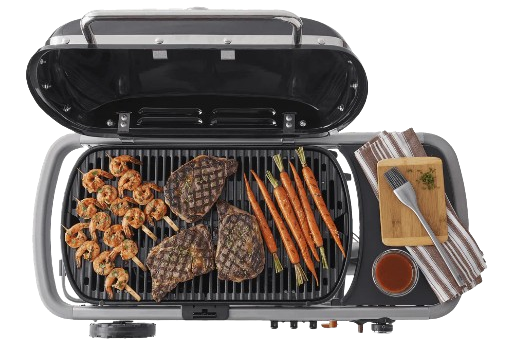

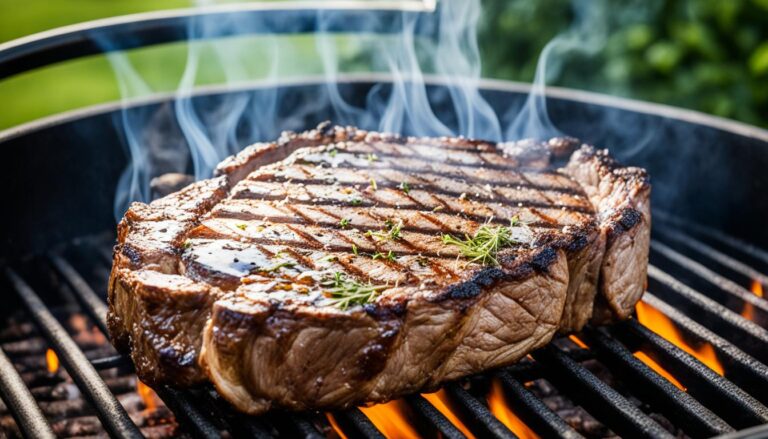
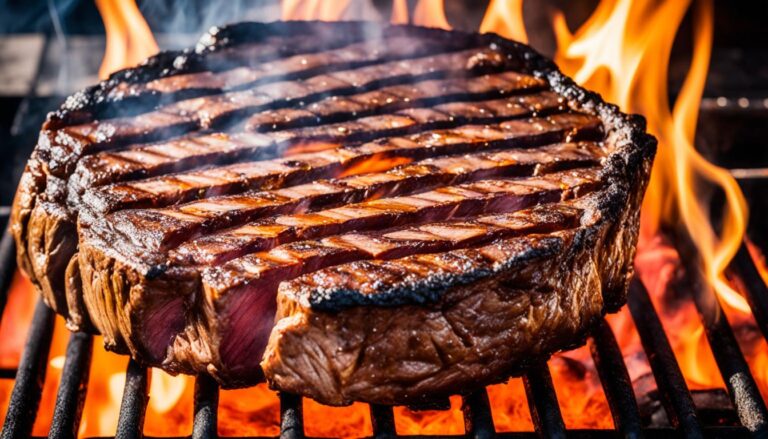
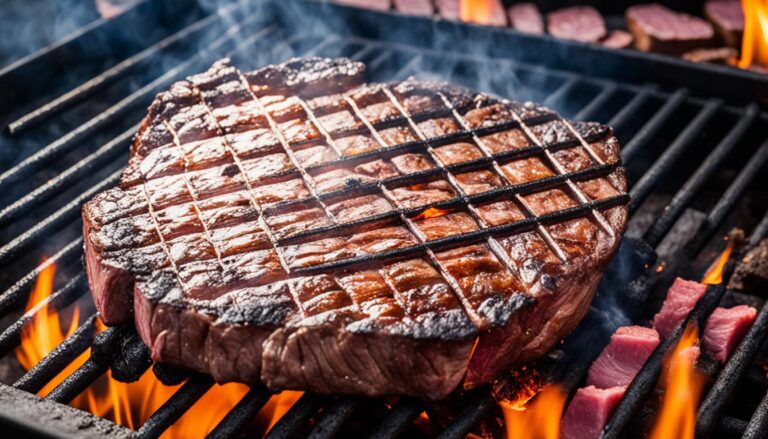
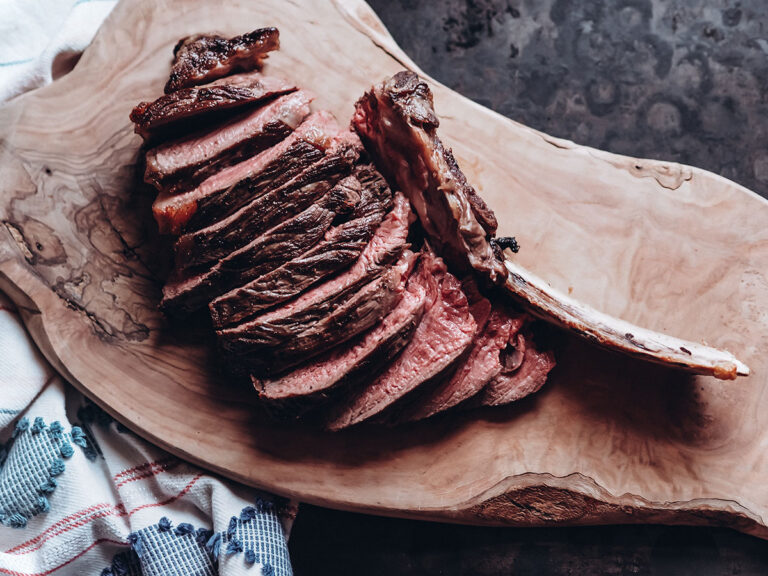
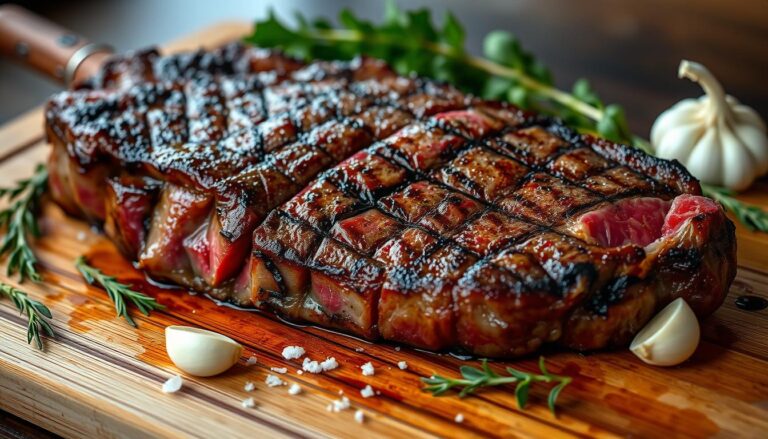
5 Comments